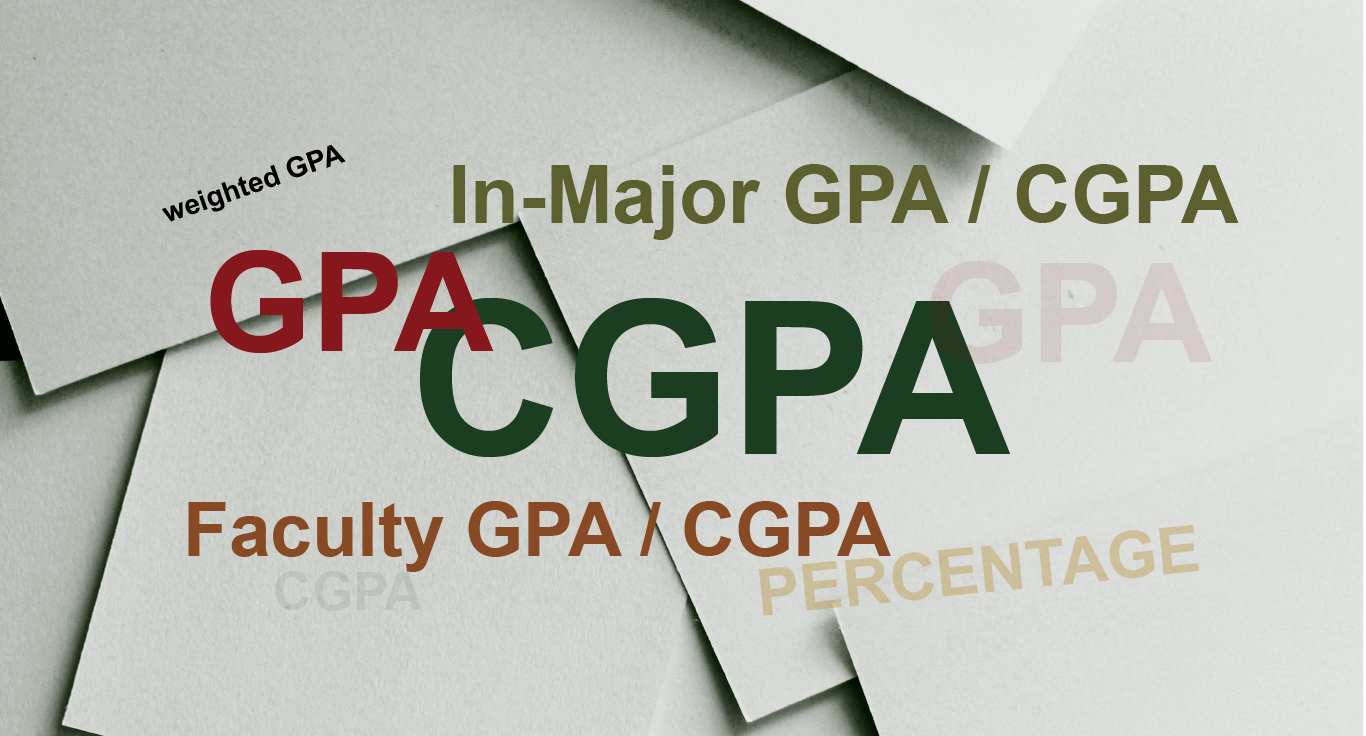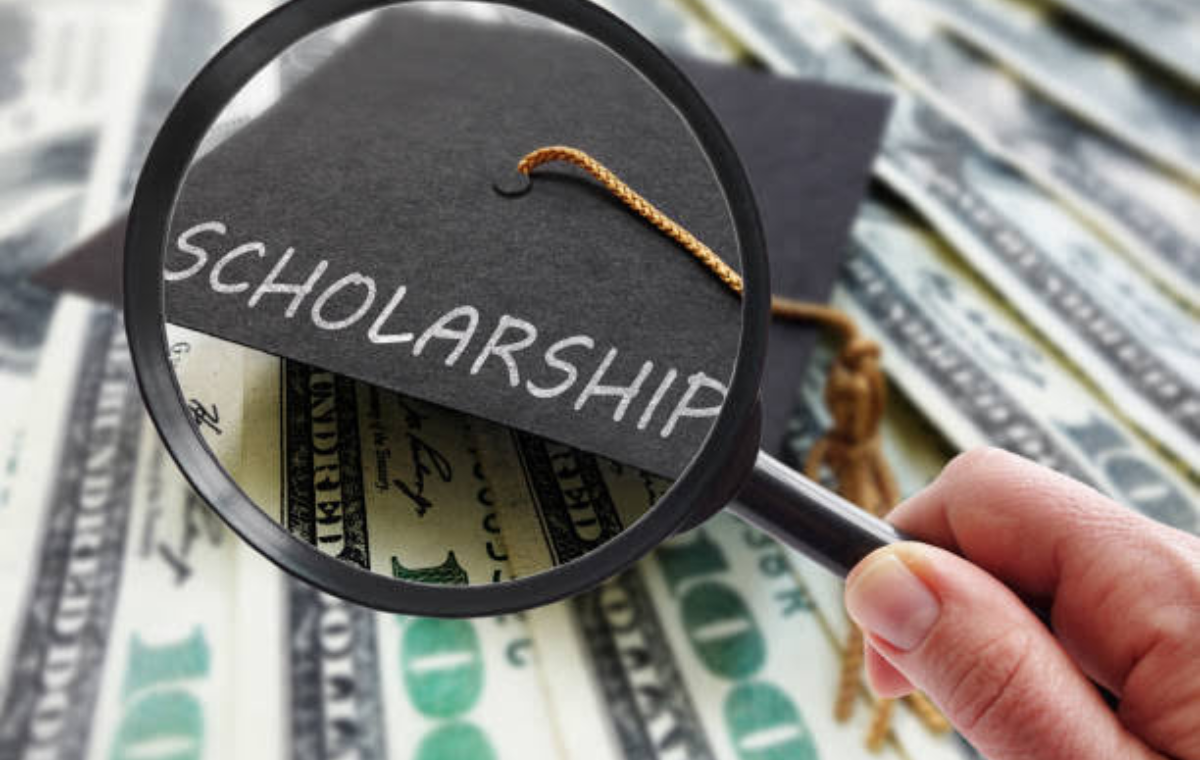Study Guide
What Are the Hardest Colleges to Get Into?
If there is one question we get often; what are the hardest colleges to get into? is one of them. As much as we will love to tell you that there is no such college, the truth still remains that there are some Lowest acceptance rate colleges whose acceptance rate is so low that you wonder if there are students who really meet their strict requirements.
Going to university is a thrilling experience for anyone, especially if you choose to study abroad! It looks excellent on your CV (or resume, depending on where you’re from) and can help you get a job after you graduate.
However, no matter where you are in the world, there will always be competition for admission to some of the world’s most famous universities.
It is often assumed that colleges with low acceptance rates will provide better education and a more distinguished degree.
However, this is not always the case. Most colleges and universities have a cap on the number of candidates they can accept.
As the number of applications to these schools increases each year, admission rates tend to fall, resulting to make these schools appear hard to get into.
There are numerous schools with high acceptance rates that also provide a great education, in some cases at a lower cost, so it’s crucial to consider all aspects of a school before applying.
With this in mind, we thought we’d look at some of the toughest universities to get into throughout the world.
Lowest acceptance rate colleges 2024
College rankings can help you identify the best colleges for you. We selected the universities with the lowest admission rates in our new 2023 college rankings. These universities have a wide range of programs and disciplines, making them ideal for students seeking a one-of-a-kind educational experience.
Take a look at this list of top 10 colleges below and consider which one is right for you based on your impressive GPAs and academic credentials.
What Are the Hardest Colleges to Get Into?
Here is a list of 10 Colleges with Low Acceptance Rates in the USA, these are the Hardest Colleges to Get Into.
- Stanford University – Stanford, California: 3.9%
- Columbia University – New York City, New York: 3.9%
- Harvard University – Cambridge, Massachusetts: 4.0%
- Massachusetts Institute of Technology (MIT) – Cambridge, Massachusetts: 4.1%
- Curtis Institute of Music – Philadelphia, Pennsylvania: 4.2%
- Princeton University – Princeton, New Jersey: 4.4%
- University of Chicago – Chicago, Illinois: 6.2%
- Juilliard School – New York City, New York: 6.2%
- Yale University – New Haven, Connecticut: 6.3%
- Alice Lloyd College – Pippa Passes, Kentucky: 7.1%
Hardest Colleges To Get into With Less than 10% Acceptance Rate
Any college that has an acceptance rate of less than 15% is a reach school for all students
| School Name | # of Applicants* | Acceptance Rate | Average SAT | Average ACT |
| Stanford | 55,471 | 3.9% | 1510 | 34 |
| Columbia | 60,551 | 3.9% | 1530 | 34 |
| Harvard | 57,786 | 4.0% | 1520 | 34 |
| MIT | 33,240 | 4.1% | 1540 | 35 |
| Princeton | 37,601 | 4.4% | 1520 | 34 |
| Yale | 46,905 | 4.6% | 1520 | 34 |
| Brown | 46,568 | 5.4% | 1490 | 33 |
| Duke | 49,517 | 5.8% | 1510 | 34 |
| UPenn | 56,332 | 5.9% | 1520 | 35 |
| UChicago | 34,400 | 6.2% | 1520 | 34 |
| Dartmouth | 28,357 | 6.2% | 1500 | 34 |
| Caltech | 8,007 | 6.7% | 1520 | 33 |
| Vanderbilt | 47,174 | 6.7% | 1510 | 34 |
| Northwestern | 47,633 | 6.8% | 1500 | 33 |
| Johns Hopkins | 27,256 | 7.1% | 1510 | 34 |
| Cornell | 67,380 | 8.7% | 1480 | 33 |
| Rice | 29,554 | 9.5% | 1520 | 34 |
Colleges with Lowest Acceptance Rates – 10% and above
We ranked the hardest colleges with low acceptance rates that might be a good fit for your needs. Take a look at this list of top schools below and consider which one is right for you!
| SCHOOL | LOCATION | FALL 2020 ACCEPTANCE RATE |
| Colby College | Waterville, ME | 10% |
| Cornell University | Ithaca, NY | 11% |
| Rice University | Houston, TX | 11% |
| Tulane University | New Orleans, LA | 11% |
| Amherst College | Amherst, MA | 12% |
| Vanderbilt University | Nashville, TN | 12% |
| Chicago School of Professional Psychology in Los Angeles | Los Angeles, CA | 13% |
| Claremont McKenna College | Claremont, CA | 13% |
| The United States Air Force Academy | USAF Academy, CO | 13% |
| The United States Coast Guard Academy | New London, CT | 13% |
| University of Science and Arts of Oklahoma | Chickasha, OK | 13% |
| Barnard College | New York, NY | 14% |
| Bates College | Lewiston, ME | 14% |
| College of the Ozarks Point | Lookout, MO | 14% |
| Colorado College | Colorado Springs, CO | 14% |
| University of California – Los Angeles | Los Angeles, CA | 14% |
| Wiley College | Marshall, TX | 15% |
| Williams College | Williamstown, MA | 15% |
| Franklin W. Olin College of Engineering | Needham, MA | 16% |
| Tufts University | Medford, MA | 16% |
| The United States Merchant Marine Academy | Kings Point, NY | 16% |
| University of Southern California | Los Angeles, CA | 16% |
| Washington University in St. Louis | St. Louis, MO | 16% |
| Carnegie Mellon University | Pittsburgh, PA | 17% |
| Georgetown University | Washington, DC | 17% |
| Pitzer College | Claremont, CA | 17% |
| Cooper Union for the Advancement of Science and Art | New York, NY | 18% |
| Hamilton College | Clinton, NY 18% | 18% |
| Harvey Mudd College | Claremont, CA | 18% |
| Haverford College | Haverford, PA | 18% |
| University of California – Berkeley | Berkeley, CA | 18% |
| Emory University | Atlanta, GA | 19% |
| Grinnell College | Grinnell, IA | 19% |
| Texas Wesleyan University | Fort Worth, TX | 19% |
| University of Notre Dame | Notre Dame, IN | 19% |
| Boston University | Boston, MA | 20% |
| Davidson College | Davidson, NC | 20% |
| Northeastern University | Boston, MA | 20% |
| Wellesley College | Wellesley, MA | 20% |
| Carleton College | Northfield, MN | 21% |
| Georgia Institute of Technology | Atlanta, GA | 21% |
| Laboure College | Milton, MA | 21% |
| New York University | New York, NY | 21% |
| Philander Smith College | Little Rock, AR | 21% |
| Webb Institute | Glen Cove, NY | 21% |
| Wesleyan University | Middletown, CT | 21% |
| Kettering College | Kettering, OH | 22% |
| Middlebury College | Middlebury, VT | 22% |
| University of Virginia | Charlottesville, VA | 23% |
| New York School of Interior Design | New York, NY | 24% |
| Ottawa University | Ottawa, KS | 24% |
| University of North Carolina – Chapel Hill | Chapel Hill, NC | 24% |
| Washington and Lee University | Lexington, VA | 24% |
| California Institute of the Arts | Valencia, CA | 25% |
| Charles R. Drew University of Medicine and Science | Los Angeles, CA | 25% |
| Vassar College | Poughkeepsie, NY 25% | 25% |
| Arkansas Baptist College | Little Rock, AR | 26% |
| Boston College | Chestnut Hill, MA | 26% |
| Calumet College of St. Joseph | Whiting, IN | 26% |
| Inter American University of Puerto Rico – Metropolitan Campus | San Juan, PR | 26% |
| University of Michigan – Ann Arbor | Ann Arbor, MI | 26% |
| Babson College | Babson Park, MA | 27% |
| Colgate University | Hamilton, NY 27% | 27% |
| Rhode Island School of Design | Providence, RI | 27% |
| Cabarrus College of Health Sciences | Concord, NC | 28% |
| Denison University | Granville, OH | 28% |
| Mississippi College | Clinton, MS | 29% |
| Point University | West Point, GA | 29% |
| St Luke’s College | Sioux City, IA | 29% |
| University of North Carolina School of the Arts | Winston-Salem, NC | 29% |
| Case Western Reserve University | Cleveland, OH | 30% |
| Galen College of Nursing – Louisville | Louisville, KY | 30% |
| Purdue University – Northwest | Hammond, IN | 30% |
| University of California – Irvine | Irvine, CA | 30% |
| Art Academy of Cincinnati | Cincinnati, OH | 31% |
| Davis College | Bible School Park, NY | 31% |
| Johnson University (FL) | Kissimmee, FL | 31% |
| University of Florida | Gainesville, FL | 31% |
Why These Universities are the Hardest to get into
Many high school students aspire for the greatest GPA and test scores in order to get admission to competitive schools. While good grades and test scores can undoubtedly help, they may not be enough to win admission to every college.
The country’s top competitive colleges all have highly stringent admissions criteria and admit just a small number of applications. So, what makes certain universities tougher to get into than others?
Some of the hardest colleges to get into are among the oldest in the country. These schools’ reputations have been developed over time by a mix of academic achievement, huge endowments, and notable alumni and professors. These elements lead to a long history of success and innovation.
While Ivy League schools make up the majority of the hardest colleges to get into, other highly selective schools like Stanford and MIT have relatively low acceptance rates. Although they do not belong to the Ivy League, they also offer extensive research opportunities and serious courses of study.
1. Harvard University — 3.19%
- Total Number of Applicants (Class of 2026): 61,220
- Total Admitted: 1,954
With a record admission rate of just 3.19% for the Class of 2026, Harvard currently ranks as the most difficult school to enter. This rate reflects admission to Harvard College, the undergraduate school of Ivy League University.
When making admissions decisions, Harvard evaluates each student as a whole person, considering both character and academic potential. The school endeavors to review each application individually so that it can fully understand students’ academic interests, backgrounds, and extracurricular talents.
Admissions officers rely heavily on letters of recommendation, college interviews, and extracurricular activities to identify outstanding students.
2. Columbia University — 3.73%
- Total Number of Applicants (Class of 2026): 60,377
- Total Admitted: 2,253
This year, Columbia ranks second among the list of hardest universities to get into with a 3.73% acceptance rate for the Class of 2026. This rate is only slightly below the rate of 3.9% in the previous year.
Columbia takes a holistic approach to its student admissions process, evaluating each student’s unique experiences, background, and academic achievement. The university verifies the rigor and variety of the courses you take and the grades you achieve.
Beyond academics, Columbia’s Admissions Committee considers factors such as extracurricular activities and letters of recommendation. Your involvement inside and outside of the classroom is a strong indicator of your ability to make a positive contribution to the school.
3. California Institute of Technology — 3.92%
- Total Number of Applicants (Class of 2025): 13,026
- Total Admitted: 510
Caltech, a leading research university, only admitted 3.92% of freshmen into the Class of 2025. Although admissions statistics for the Class of 2026 have yet to be released, we know that the prestigious institution admitted even fewer students this year. last year: 432.
Caltech is looking for students who share a love of STEM and have a particular interest in math, chemistry, and physics. The school also favors candidates with a collaborative, creative, and resilient spirit.
Additionally, Caltech greatly values candidates with non-STEM related passions and hobbies.
4. Stanford University — 3.95%
- Total Number of Applicants (Class of 2025): 55,471
- Total Admitted: 2,190
With a 3.95% acceptance rate for the Class of 2025, Stanford is just behind Caltech. The school welcomed 10,000 more applications in 2021 than in 2020, a 23% increase.
The acceptance rate for the Class of 2026 hasn’t been released, but it’s likely to be similar to last year’s, if not slightly lower.
At Stanford, your academic record is the most important factor in determining admissions. The university also looks at components beyond digital data, such as extracurricular activities and personal essays, that you can use to illustrate your unique background and experiences.
5. MIT — 3.96%
- Total Number of Applicants (Class of 2026): 33,796
- Total Admitted: 1,337
MIT, a leading technical school, currently has an extremely low acceptance rate of 3.96% for the Class of 2026. This represents a 2% increase in applications over the 2020-21 admissions cycle.
Your overall school aptitude is the primary criterion for admission to MIT, although grades and test scores are still important. MIT aims to enroll students who have a collaborative spirit and who uplift their peers.
In addition, those applying to MIT should feel comfortable working in a team; Most courses and labs are designed for collaboration.
MIT prioritizes students who are willing to take risks and accept mistakes.
6. Princeton University — 4.38%
- Total Number of Applicants (Class of 2025): 37,601
- Total Admitted: 1,647
Princeton is extremely competitive with a 4.38% acceptance rate for the Class of 2025. Unfortunately, the institution chooses to withhold acceptance rate data for the Class of 2026.
The Ivy aims to identify students who make a positive contribution and bring unique perspectives to its community. Rather than looking for specific academic criteria, Princeton prefers applicants who have challenged themselves with rigorous awards and AP courses.
In addition to a strong academic record, candidates should demonstrate strong extracurricular achievement and a deep intellectual curiosity.
7. Yale University — 4.47%
- Total Number of Applicants (Class of 2026): 50,015
- Total Admitted: 2,234
Yale is one of the hardest colleges to reach, with an acceptance rate of 4.47% for the Class of 2026, which is slightly below the 4.62% acceptance rate for the Class of 2025.
The university differs slightly from other Ivies in the factors it considers during the admissions process. Yale looks for two key elements: the ability to contribute to the school community and the ability to make the most of school resources.
Although Yale also assesses non-academic factors, it remains a very competitive institution. Admissions officers focus on identifying exceptional ability and academic promise through a combination of grades, test scores, and course rigor.
8. Brown University — 5.03%
- Total Number of Applicants (Class of 2026): 50,649
- Total Admitted: 2,546
This year, Brown welcomed its largest pool of applicants to date, resulting in an extremely low acceptance rate of 5.03%.
The prestigious university examines every application holistically, taking into account how students used their resources and opportunities in high school. Engagement outside of the classroom is fundamental to Brown’s culture, so your extracurricular performance is a major factor in determining whether you will be admitted.
Through essays and interviews, Brown seeks candidates who benefit from and contribute to the school’s academic culture.
9. University of Pennsylvania — 5.87%
- Total Number of Applicants (Class of 2025): 56,332
- Total Admitted: 3,304
Penn’s undergraduate admissions rate has fallen from 8.6% for the Class of 2024 to just 5.87% for the Class of 2025. However, like Princeton and several other top schools, this year Penn is choosing to maintain the Class of 2026 acceptance rates.
The university attaches great importance to academic excellence. The most competitive candidates have good grades and have completed rigorous coursework.
Penn also seeks students with unique backgrounds and talents who will make a positive contribution to the community. These personal characteristics are generally determined through a review of extracurricular activities, interviews, and two personal essays that relate specifically to Penn.
10. Vanderbilt University — 6.1%
- Total Number of Applicants (Class of 2026): Not reported
- Total Admitted: Not reported
This year, Vanderbilt admitted just 6.1% of its freshmen, making it one of the top 10 most difficult colleges to reach. Only 4.7 percent of the applicants were admitted to the regular decision – a record for the renowned private institution.
Like many other schools on this list, Vanderbilt takes a holistic approach when evaluating applications. The first school examines five main components: academic performance, SAT and ACT test scores, extracurricular attendance, letters of recommendation, and personal essay.
Vanderbilt emphasizes that “context matters” and that the evaluation of your grades, test scores, and course performance will be considered in light of the opportunities and options available at your school.
Frequently Asked Questions
Is there a college with a 100 acceptance rate?
Cameron University in Lawton, Oklahoma boasts a 100% acceptance rate and enrolls over 5,500 undergraduate and graduate students each year. In addition to degrees, the college offers continuing education courses.
Which college has the hardest acceptance rate?
Harvard University is the university with the hardest acceptance rate – With a record admission rate of just 3.19% for the Class of 2026, Harvard is currently considered the most difficult school to enter. This rate reflects admission to Harvard College, the undergraduate school of Ivy League University.
Which university in US has the highest acceptance rate?
Best universities in the U.S. – Acceptance rates for 2020
- University of California, Berkeley (UCB) – 17%
- The University of California, Los Angeles (UCLA) – 17%
- New York University (NYU) – 32%
- The University of California, San Diego (UCSD) – 30.2%
- Duke University – 7.6%
- Carnegie Mellon University – 15.4%
- Brown University – 9.3%
What college is easiest to get into?
The easiest colleges to get into are:
- Adams State University.
- University of Texas at El Paso.
- Eastern Washington University.
- Dickinson State University.
- Presentation College.
- Eastern Oregon University.
- Wright State University.
- Western Kentucky University.
Conclusion:
The University level is the most competitive level of study. Its competitiveness also extends to the type and pace of admission to the school. Accessing a university can be difficult due to its policies and admissions requirements.
It may also be because the school has a low admission rate or there is a large number of applicants applying to the school. The admission rate and application rate make a university’s admissions process competitive and this can be determined by the capacity of the school.
However, some universities around the world are notoriously hard to get to. Admission to such universities is an achievement.
The fame of these universities follows their students and even gives them a place after graduation because almost all Colleges With the Lowest Admit Rate are characterized by the quality of their results.
I hope this article has helped you know all you needed to know about universities with the lowest acceptance rate.






